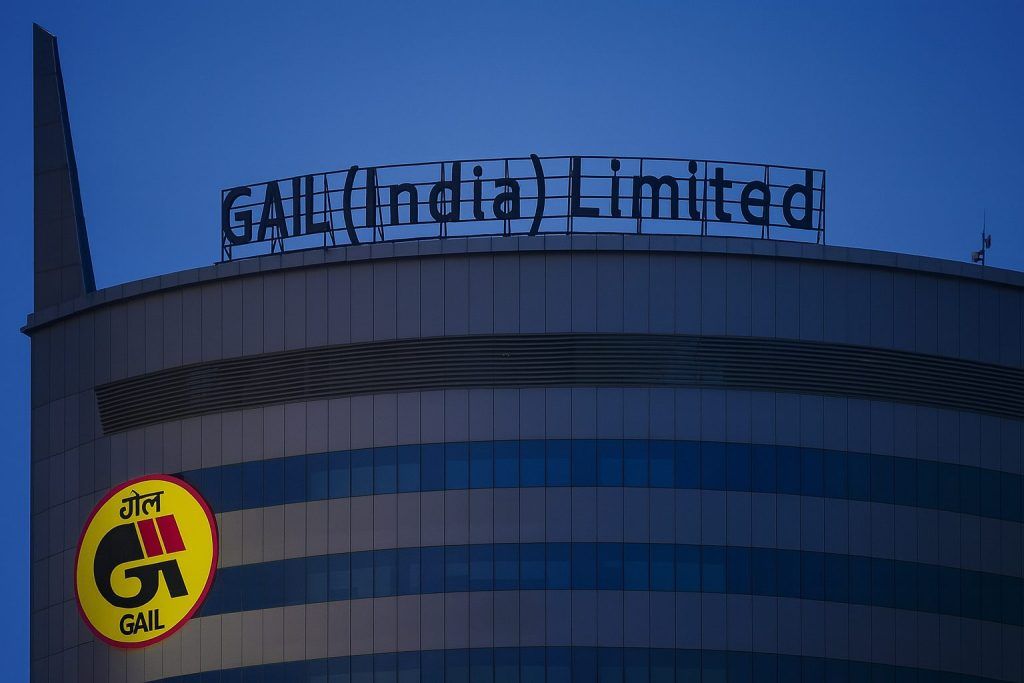BSE Ltd — the listed owner of the Bombay Stock Exchange — ended Friday’s session slightly lower, pausing after a powerful multi‑month rally that has turned the stock into one of Dalal Street’s standout compounders.
According to exchange data compiled by multiple market trackers, BSE closed around ₹2,911 on 28 November 2025, down roughly 0.6% from the previous close of ₹2,929.10. The stock opened near ₹2,940, hit an intraday high of about ₹2,942, and slipped to a low close to ₹2,901, with volumes around 1.1–1.2 million shares on the NSE. [1]
Despite the muted day, the bigger picture remains striking: over the last month BSE is up about 20%, over three months roughly 34%, about 91% over the past year, and an eye‑watering 1,430% over three years on the NSE. [2]
Below is a structured look at all the relevant BSE‑linked news and data points for 28 November 2025, and what they mean for the stock.
BSE Ltd share price today: key levels and trading action
Market data from multiple platforms show a classic consolidation day after a strong run:
- Close (provisional): ~₹2,911
- Previous close: ₹2,929.10
- Intraday range: roughly ₹2,901 – ₹2,942
- Open: about ₹2,940
- Volume: ~1.1–1.2 million shares
- Market capitalisation: around ₹1.18 lakh crore
- 52‑week range: ₹1,227.33 – ₹3,030 [3]
Mint and other live‑price trackers during the session showed BSE trading between ₹2,900 and ₹2,942.30, modestly in the red by roughly 0.4–0.6%, consistent with the final close. [4]
The stock remains just a few percentage points below its 52‑week (and all‑time) high of around ₹3,030, underlining how extended the recent move has been. [5]
Broader market backdrop
The broader market was quiet rather than panicked. On Friday, Nifty50 opened nearly flat around 26,219, while the BSE Sensex hovered near 85,750, signalling a cautious but not risk‑off tone across large caps. [6]
In other words, BSE’s mild dip looks more like consolidation after a rally than a stock‑specific shock.
What is moving BSE stock on 28 November 2025?
1. Profit‑taking after a spectacular run
With the stock up roughly 20% in one month, more than 30% in three months, and about 91% over 12 months, short‑term traders have ample reason to lock in gains. [7]
A feature on BSE’s recent surge noted that the stock had been trading near record levels as volumes surged and markets hit new peaks this week, emphasising a strong momentum backdrop leading into today’s pause. TS2 Tech+2Business Standard+2
2. Valuations are rich by almost any metric
Multiple fundamental screeners now show BSE trading at elevated valuation multiples:
- P/E (TTM): roughly 65–70x
- P/B: roughly 19–23x
- ROE: around 35%
- Dividend yield: ~0.25–0.45% [8]
Research tools and valuation dashboards point out that BSE’s current P/E sits well above its own historical averages in the low‑20s, and significantly richer than the broader financials sector in India. [9]
Some quantitative models now categorize the stock as trading in a higher‑valuation “sell zone” relative to its past P/E distribution, which naturally encourages profit‑booking among short‑term investors even if long‑term fundamentals remain intact. [10]
3. Underlying trend still anchored in strong earnings
The run‑up in BSE is not purely speculative. The company’s Q2 FY26 (September quarter) results earlier this month were robust:
- Revenue from operations: ~₹1,068 crore, +44% YoY and +12% QoQ
- Total income: ~₹1,140 crore, +40% YoY
- Net profit (PAT): ~₹557–558 crore, +61% YoY and about +3–4% QoQ
- EBITDA: roughly ₹691 crore, with margin improving to ~64.7% from about 52% a year ago [11]
Management and coverage reports attribute this performance to:
- Higher transaction income in equity and derivatives trading
- Continued scaling of BSE StAR MF, the exchange’s mutual fund distribution platform
- Growth in corporate services and data offerings [12]
Unsurprisingly, the stock jumped 5–7% on and immediately after the Q2 earnings announcement as the market repriced BSE’s earnings power higher. [13]
Today’s mild cooling therefore looks more like a valuation breather than a reversal of the fundamental story.
All the key BSE‑linked news for 28 November 2025
While there is no new earnings announcement from BSE today, several operational and ecosystem developments tied to the exchange are in focus.
1. Full‑scale mock trading across segments on 29 November
The most direct BSE‑specific news around this date is the exchange’s plan to conduct a comprehensive mock trading session on Saturday, 29 November 2025.
According to official circulars and broker notes, the mock drill will span: [14]
- Equity cash segment
- Equity derivatives
- Currency derivatives
- Commodity derivatives
The primary purpose is to test trading applications, risk management changes and market functionalities under simulated conditions. These drills are particularly relevant ahead of:
- Product or rule changes in derivatives
- Technology upgrades to matching and risk engines
- Year‑end liquidity and volatility pockets
For shareholders, such exercises are a reminder that BSE is a critical market infrastructure institution whose value is tied not only to trading volumes and fees, but also to the robustness of its systems.
2. NFO and capital‑markets ETF flows where BSE is a key constituent
November 28 is also the closing date for several mutual fund New Fund Offers (NFOs) using BSE’s StAR MF platform. BSE has previously notified distributors that clear funds for some NFOs must be available by 28 November 2025, making today the operational cutoff in a few schemes. [15]
One noteworthy product for BSE shareholders is the Groww Nifty Capital Markets ETF, whose NFO closes today, with the underlying index giving BSE one of the largest weights (around 19.5%) among its constituents. [16]
While the absolute AUM of a single ETF launch is unlikely to move the needle alone, such products can institutionalise demand for exchange stocks like BSE over time by locking them into index portfolios.
3. Routine but active corporate‑action flow on BSE’s platforms
Several exchange notices that take effect from 28 November 2025 also went live earlier this month and are operational today, including: [17]
- Listing of new securities of companies such as Remi Edelstahl Tubulars Ltd on BSE
- Segment changes, e.g., select smaller stocks moving from trade‑for‑trade to rolling segment with effect from 28 November
- Opening of Offer to Buy – Acquisition Window (Takeover) processes that run from 28 November to 11 December 2025
- Rights entitlement trading windows that end today for certain companies
These actions don’t directly change BSE’s P&L overnight, but they underscore the breadth of activity on the exchange—from primary listings and rights issues to takeover offers and corporate‑action processing—which collectively drive fee income over time.
Why BSE’s fundamentals have attracted so much attention
The enthusiasm around BSE in 2025 can be traced back to a mix of earnings momentum, capital‑return policies, and a strategic repositioning of the business.
Q4 FY25: explosive profit growth and a hefty dividend
In the March 2025 quarter, BSE reported net profit of around ₹494 crore, up more than 360% YoY, on revenue of roughly ₹847 crore, a ~75% YoY jump. [18]
Alongside those numbers, the board declared a ₹23 per‑share dividend (face value ₹2), combining a special dividend of ₹5 to mark BSE’s 150th year with a regular ₹18 final dividend. [19]
Earlier in 2025, BSE also executed a 2:1 bonus issue, with shares turning ex‑bonus in May and subsequently rallying as the market absorbed the higher free‑float. [20]
Q2 FY26: revenue and profit momentum continues
The latest Q2 FY26 numbers show that the strong performance was not a one‑off:
- Revenue from operations: ₹1,068 crore (vs ₹741 crore YoY)
- Total income: ~₹1,140 crore
- PAT: ~₹557–558 crore (vs ~₹346–347 crore YoY)
- Expenses: grew only ~7–8% YoY, well below revenue growth
- EBITDA margin: has expanded into the mid‑60s [21]
Commentary around the results highlights three big growth engines:
- Derivatives & cash trading – higher transaction income on the back of surging retail and proprietary trading.
- BSE StAR MF – now one of India’s largest mutual fund transaction platforms, with strong growth in transactions and revenue. [22]
- Corporate and data services – listings, corporate‑action services, and market‑data products contributing meaningfully to non‑transaction revenue.
Balance sheet and profitability profile
Fundamental screeners paint an attractive structural picture:
- Company is almost debt‑free
- Five‑year profit CAGR of around 65%
- ROE in the mid‑30s
- A history of healthy dividend payouts (over 40% on average) [23]
These traits help explain why long‑term investors have been willing to tolerate higher and higher valuation multiples.
Valuation, broker views and what they imply (not advice)
Analyst and data‑provider views converge on a simple theme: excellent business, stretched valuation.
- Groww, Investing.com and other platforms peg BSE’s trailing P/E in roughly the 65–70x band and P/B in the high‑teens to low‑20s, above most domestic capital‑markets peers. [24]
- One smart‑beta style tool labels the stock an “expensive star”—strong on quality and momentum, but “bad in valuations,” urging caution on future returns from current levels. [25]
Trendlyne’s consensus compilation of 14 analysts shows an overall “Buy” stance, but with a 12‑month target around ₹2,679, which actually sits below today’s market price—essentially signalling that the rally has overshot what many models had pencilled in. [26]
Individual broker calls echo this nuance:
- Jefferies recently cut its target price to ₹2,790, citing concerns around derivatives volume sustainability and structural changes impacting earnings, even as it acknowledged strong Q1 and Q2 performance. [27]
- Domestic brokerages such as ICICI Securities and Motilal Oswal have oscillated between Hold, Neutral and Buy ratings over the year, often raising targets but flagging rich valuations and regulatory uncertainties around options trading. [28]
None of these views are guarantees, of course—they are probabilistic opinions based on current earnings models, which will evolve with future data.
Key risks investors are watching
Without telling anyone what they should do with their money, it’s useful to note the main risk themes that keep appearing in professional coverage of BSE:
- Valuation risk
With the P/E multiple around the mid‑60s and well above long‑term averages, even small negative surprises in earnings, regulation or volumes can trigger disproportionately large price swings. [29] - Regulatory and product‑mix risk
BSE’s spectacular earnings growth is heavily tied to equity derivatives and options volumes. Shifts in SEBI rules, margin norms, expiry day changes or surveillance actions (for instance, BSE’s inclusion in the Additional Surveillance Measure (ASM) framework earlier in June 2025) can hit both volumes and sentiment. [30] - Operational and cyber risk
As a systemically important market infrastructure institution, BSE is exposed to technology and cyber threats. Earlier this year, both NSE and BSE restricted overseas website access as a precaution after threat assessments, illustrating how cyber‑security measures can suddenly become front‑page issues. [31] - Competition from NSE and new platforms
NSE remains the dominant derivatives venue in India, and any shift in the competitive balance—whether through pricing, product innovation, or regulatory changes—can alter BSE’s growth trajectory.
For now, though, the market is signalling that despite these risks, BSE’s combination of explosive earnings growth, capital‑return policies, and near‑debt‑free balance sheet still commands a premium.
Bottom line for 28 November 2025
- Price action: BSE ended the day modestly lower, down about 0.6%, after a huge multi‑month rally, trading in a narrow band between roughly ₹2,900 and ₹2,942.
- News flow: The main operational focus is on tomorrow’s full‑scale mock trading session, plus NFO and corporate‑action deadlines that keep BSE’s platforms busy but don’t fundamentally change the story today. [32]
- Fundamentals: Q2 FY26 results remain the anchor narrative—revenue up 44%, PAT up 61%, and margins expanding into the mid‑60s. [33]
- Valuation: The stock trades at rich multiples, with trailing P/E in the mid‑60s and P/B well over 18x, far above historical averages and peer medians, which is why even a small downtick like today attracts attention. [34]
References
1. www.investing.com, 2. www.business-standard.com, 3. www.investing.com, 4. www.livemint.com, 5. www.moneycontrol.com, 6. timesofindia.indiatimes.com, 7. www.business-standard.com, 8. groww.in, 9. www.smart-investing.in, 10. trendlyne.com, 11. www.etnownews.com, 12. www.etnownews.com, 13. www.business-standard.com, 14. www.angelone.in, 15. www.publicnow.com, 16. assets-netstorage.growwmf.in, 17. www.marketscreener.com, 18. economictimes.indiatimes.com, 19. www.etnownews.com, 20. www.etnownews.com, 21. www.etnownews.com, 22. www.bajajbroking.in, 23. www.screener.in, 24. groww.in, 25. trendlyne.com, 26. trendlyne.com, 27. economictimes.indiatimes.com, 28. www.moneycontrol.com, 29. www.smart-investing.in, 30. economictimes.indiatimes.com, 31. www.reuters.com, 32. www.angelone.in, 33. www.etnownews.com, 34. www.investing.com







